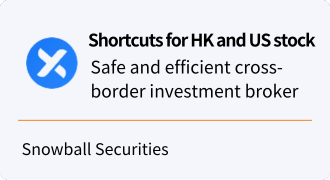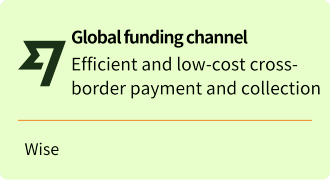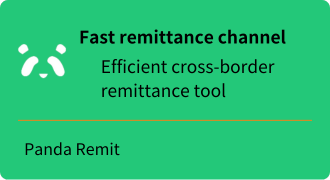QQQ ETF Analysis: 26-Year Journey of NASDAQ 100 Fund (1999-2024)
[DISCLAIMER] This article is for educational and informational purposes only and does not constitute investment advice. Readers should consult with qualified financial professionals before making any investment decisions.
As a senior quantitative trading practitioner and financial media, I often receive questions from readers: “Teacher, I'm a white person, I want to invest in U.S. technology stocks, how to start?” Today, let us through a 26 years of real investment cases, to recognize the QQQ (Nasdaq 100 ETF) known as “technology stocks investment gold pass”.
I. Nasdaq 100 ETF: The “Group Buying Magic” of Tech Investing
You want to invest in Apple, Microsoft or Tesla, but you don't know which one to choose? The Nasdaq 100 ETF (QQQ) packages 100 of the top technology companies for you. Simply put, you can buy all the tech giants with one lottery ticket.
Why are more and more investors choosing QQQ?
- Diversified investment: Buy 100 quality companies with one click.
- Low-cost and efficient: save money compared to buying each stock individually
- High liquidity: trade anytime like stocks
- Keeps up with the technology trend: Automatically adjusts to always track industry leaders
Ⅱ. Two, 26 years of $1 million investment real life
Let's look at a real-life example: $1 million invested in 1999 to buy QQQ by the end of 2024:
- Final Market Capitalization: $14,088,972
- Total return: 1308.90%
- Annualized rate of return: 10.8%
The formula for the annualized rate of return and the process of calculating it:
\(\begin{align} \text { Annualized rate of return } & = (1 + \frac {\text { Total Return } }{\text { 100 }}) ^ {\frac{1} {\text { Investment Period }}} -1 \\ & = (1 + \frac{\text { 1308.9% }}{\text { 100 }}) ^ {\frac{1} {\text { 25.82 }}} -1 \\ & = (14.08) ^ {\frac{1} {\text { 25.82 }}} -1 \\ & = 1.108 - 1 \\ & = 10.8 \% \end{align}\)
It looks pretty, but it hasn't been a straightforward 26 years. Investors have experienced three big, thrilling retracements, each as exciting as a roller coaster.
Ⅲ. The life and death of three major retracements
3.1. 2000 Tech Bubble: The Worst Winter Ever
- Start date: 2000/3/24
- Bottom date: 2002/10/9
- Recovery Date: 2015/8/31
- Peak: $2.30 million
- Trough: $0.39 million
- Retracement: -82.96%
- Recovery time: 15.4 years
This is the worst retracement in QQQ's history. Imagine what it's like to have $5 million turn into $1 million, and then wait 15 years for your capital to recover, what kind of suffering is that?
3.2. 2008 Financial Crisis: The Test of Maturity
- Start date: 2007/10/31
- Bottom date: 2009/3/11
- Recovery date: 2011/4/6
- Peak: $1.11 million
- Trough: $0.57 million
- Retracement: -49.29%
- Recovery time: 3.4 years
The impact from the financial crisis was relatively mild, technology companies experienced growth and increased risk resistance, and the recovery period was dramatically shortened.
3.3. 2020 Epidemic: Blitzkrieg
- Start date: 2020/2/19
- Bottom date: 2020/3/23
- Recovery Date: 2020/6/5
- Peak: $6.14 million
- Trough: $4.38 million
- Retracement: -28.56%
- Recovery time: 3.5 months
This is a typical V-shaped reversal that not only has the smallest retracement, but also the fastest recovery. In a typical V-shaped reversal, the market's confidence in technology stocks has been firmly established.
IV. Investment insights: from shocking waves to calm waves
4.1. Evolution of risk characteristics
- Valuation Bubble: (most dangerous) like a roller coaster, need an iron stomach
- Systemic risk: (second most dangerous) like an aircraft carrier, with increased stability
- External shocks: (controllable) like a spring, rebound quickly after shocks
4.2. Evolution of investment strategy
- Early stage: Super patience is a must
- Mid-term: focus on policy shift
- Near-term: capitalize on shocks
4.3. Cash management tips
- Toward the end of the bull market: keep enough “ammo”.
- During the crash: “bottoming out” in batches
- External impact: decisive action
V. Guide to investing for beginners
Three do's and three don'ts for novice investors:
The first thing you need to do is to be patient:
- Be patient: at least five years investment period
- To be prepared: at any time may be 30-50% retracement
- To have cash: timely grasp of low opportunities
Don't:
- Do not chase high: high point full position is a big no-no
- Do not panic: the crash is an opportunity not a disaster
- Do not increase leverage: steady to go far
Ⅵ. the future outlook: fixed investment may be more suitable for you
After watching the roller coaster ride of lump sum investment, you may ask: Is there a smoother way to invest?
In the next article, I will break down QQQ's fixed investment strategy for you in detail:
- Which is better: daily, weekly or monthly?
- How do you combat pullbacks with fixed investments?
- Can you achieve more stable returns with fixed investment?
Ⅶ. Conclusion
The 26 years of QQQ's investment journey has taught us that technology investment is both an opportunity and a challenge. A one-time investment, though with impressive returns, requires superb mental capacity. For ordinary investors, it may be more suitable to smooth out the risk through fixed investment.
Do you have any tips or questions about QQQ investment? Feel free to share them in the comments section and we'll see you in the next issue!







